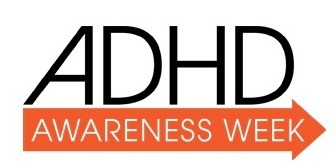 Attention deficit disorder can’t be diagnosed based on the presence of one symptom. That’s because it’s not abnormal for people to feel distracted, unfocused and scattered sometimes. Not to mention that ADHD symptoms can be confused with other issues. This leads to misdiagnoses of disorders such as emotional issues and/or learning disabilities. Therefore, only a mental health specialist has the qualifications needed to make an accurate diagnosis.
Attention deficit disorder can’t be diagnosed based on the presence of one symptom. That’s because it’s not abnormal for people to feel distracted, unfocused and scattered sometimes. Not to mention that ADHD symptoms can be confused with other issues. This leads to misdiagnoses of disorders such as emotional issues and/or learning disabilities. Therefore, only a mental health specialist has the qualifications needed to make an accurate diagnosis.
What You Should Know About Diagnosing ADHD
Just as there’s no single symptom as proof of ADHD, there’s no single test that can determine its existence. A precise diagnosis can only be made with the involvement of a mental health professional or a doctor. Even then, multiple tools are used, including:
- a symptoms checklist
- past and present issues are examined
- medical exam conducted to rule out other symptom-related causes
–
Always remember that there are various ADHD symptoms that can be confused with other medical issues or disorders. Hyperactivity and concentration problems are two problems that may look like ADHD. But, after a thorough assessment, a professional diagnosis may determine that ADHD doesn’t exist.
Making an Accurate ADHD Diagnosis
If you examine a group ADHD sufferers, you’ll find that the disorder looks different in each individual. This is one reason why there’s a need for such a wide-array of testing measures for helping professionals reach diagnosis. Therefore, potential sufferers must be honest and open during evaluations. That’s the only way for the specialist to come up with an accurate conclusion.
Factors Evaluated with ADHD is Diagnosed
There are some really strong hallmark symptoms related to ADHD. A combination of them is needed for an ADHD diagnosis. Some of the hallmark symptoms include lack of attention, becoming very impulsive and hyperactivity. These are some of the other factors your mental health professional will examine during the assessment:
- The Severity of the Symptoms – Do the symptoms have a negative impact on the life of the potential sufferer? Generally people with ADHD will exhibit serious problems in in the family relationships, finances and/or careers.
- The Beginning of the Symptoms – At what age did the ADHD symptoms begin to show themselves? Because ADHD begins during childhood, your therapist or doctor will look into how soon the symptoms appeared. When it comes to adults, they should be traceable all the back to childhood.
- The Length of the Symptoms – How long have the symptoms been causing a disturbance? If the symptoms have been bothering the potential sufferer for less than six months, a proper ADHD diagnosis can’t be made just yet.
- The Where and When of the Symptoms – ADHD symptoms have to present within more than one environment, such as at school and home. If symptoms only appear in one setting, more than likely, it’s not related to ADHD.
–
A proper ADHD diagnosis can be the encouragement you need to get control over your symptoms. Oftentimes, without help, your ADHD symptoms will stop you from obtaining success and happiness in your life. The sooner you begin treatment, the sooner you can take control of your life and your destiny.
Information compliments of Liahona Academy: http://www.liahonaacademy.com/


















